russia
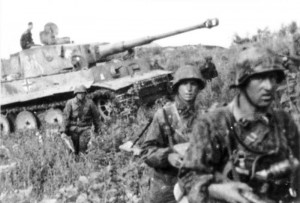 When the Germans invaded the Soviet Union in early July of 1943, they concentrated their forces near the city of Kursk in Western Russia. This was the site of a 150 mile wide Soviet resistance pocket that jutted 100 miles into the German lines. When the attack began on July 5th, the Germans had 38 divisions, of which, nearly half were armored. The Germans began their attack coming in from the north and the south, in an effort to cut off and surround the Soviet troops. Unfortunately for them, they had sorely misjudged the Soviet forces. Even though the Soviets were not really prepared for this invasion, they did have better tanks and air support than they had in previous battles. The fighting was bitter, but soon the Soviets had destroyed as much as 40 percent of the German armor, which included their new Mark VI Tiger tanks. I’m sure this must have been a shock to the Germans, who thought this tank was going to be their best tank ever, but like the Bismarck back in 1941, they found out that these new tanks were no match for what the Russians brought out.
When the Germans invaded the Soviet Union in early July of 1943, they concentrated their forces near the city of Kursk in Western Russia. This was the site of a 150 mile wide Soviet resistance pocket that jutted 100 miles into the German lines. When the attack began on July 5th, the Germans had 38 divisions, of which, nearly half were armored. The Germans began their attack coming in from the north and the south, in an effort to cut off and surround the Soviet troops. Unfortunately for them, they had sorely misjudged the Soviet forces. Even though the Soviets were not really prepared for this invasion, they did have better tanks and air support than they had in previous battles. The fighting was bitter, but soon the Soviets had destroyed as much as 40 percent of the German armor, which included their new Mark VI Tiger tanks. I’m sure this must have been a shock to the Germans, who thought this tank was going to be their best tank ever, but like the Bismarck back in 1941, they found out that these new tanks were no match for what the Russians brought out.

The Battle of Kursk was quite the battle. It involved 6,300 tanks, two million men, and 5,000 aircraft. It would be the largest tank battle in history, and it would end with the German offensive being driven back by the Soviets. The cost to the Germans was heavy, and the battle would be the beginning of the end for the Germans in Russia. The retreated as far as they were allowed, but Hitler was not really willing to let the retreat much. It was just another part of his insanity. He thought he could outlast the Russians. He had not learned from Bismarck or from Napoleon. It’s not surprising really. Hitler’s insanity honestly made him believe that he was invincible, a fatal mistake…at least in that he couldn’t accept the ultimate failure and so took his own life. The Battle of Kursk ended on July 13, 1943, and it did indeed mark the beginning of the end of the German invasion of Russia.
When I think of wars, for some reason I don’t think of tanks. Oh, I have seen the war movies and all, but tanks just seem clunky and awkward, and so not an efficient weapon of war in my mind. I suppose that if I know as much about tanks as my brother-in-law, Ron Schulenberg, who served in Desert Storm and was trained in the  use of tanks knows, I might think they were more of a serious weapon. That is something I might have to discuss with him in the near future. The weapons used in wars are varied, and each one serves a purpose. Of course, each side tries to come up with a weapon that is far better than their opponent, and in the end, it is a matter of having the best weapon between the two enemies, and which side is able to use the weapons available to them. On this day, July 13, 1943 the Germans found out that the weapons the Russians had and their ability to use them would prove to be the undoing of their invasion. In the beginning of August, the Soviets began a major offensive around the Kursk area, and within weeks the Germans were in retreat all along the eastern front.
use of tanks knows, I might think they were more of a serious weapon. That is something I might have to discuss with him in the near future. The weapons used in wars are varied, and each one serves a purpose. Of course, each side tries to come up with a weapon that is far better than their opponent, and in the end, it is a matter of having the best weapon between the two enemies, and which side is able to use the weapons available to them. On this day, July 13, 1943 the Germans found out that the weapons the Russians had and their ability to use them would prove to be the undoing of their invasion. In the beginning of August, the Soviets began a major offensive around the Kursk area, and within weeks the Germans were in retreat all along the eastern front.
 Anyone who knows much about Nazi Germany, knows that Adolf Hitler was insane. His hatred for the Jewish people was nothing less that insanity, because he had no valid reason to hate them. Nevertheless, the Holocaust did happen. Hitler did kill between five and six million Jews during his reign of terror. Many people thought that the Jews were the only target Hitler had too, but that wasn’t so. Hitler wanted to kill anyone who annoyed, inconvenienced, or even remotely bothered him. On this day, July 8, 1943, upon the German army’s invasion of Pskov, 180 miles from Leningrad, Russia, the chief of the German army general staff, General Franz Halder, records in his diary Hitler’s plans for Moscow and Leningrad: “To dispose fully of their population, which otherwise we shall have to feed during the winter.” Hitler planned to level both cities, or at least kill everyone in them, because he didn’t want to have to feed the prisoners during the long winter months! And for no other reason. Most armies at least set up prisoner of war camps, which while not terribly humane, gave some semblance of an attempt to be humane. I know that everyone complains about how the United States treats prisoners of war, but there really is no comparison, when you view the way Hitler and some other terrible dictators treat prisoners of war. Humane treatment is a pipe dream for prisoners of dictators.
Anyone who knows much about Nazi Germany, knows that Adolf Hitler was insane. His hatred for the Jewish people was nothing less that insanity, because he had no valid reason to hate them. Nevertheless, the Holocaust did happen. Hitler did kill between five and six million Jews during his reign of terror. Many people thought that the Jews were the only target Hitler had too, but that wasn’t so. Hitler wanted to kill anyone who annoyed, inconvenienced, or even remotely bothered him. On this day, July 8, 1943, upon the German army’s invasion of Pskov, 180 miles from Leningrad, Russia, the chief of the German army general staff, General Franz Halder, records in his diary Hitler’s plans for Moscow and Leningrad: “To dispose fully of their population, which otherwise we shall have to feed during the winter.” Hitler planned to level both cities, or at least kill everyone in them, because he didn’t want to have to feed the prisoners during the long winter months! And for no other reason. Most armies at least set up prisoner of war camps, which while not terribly humane, gave some semblance of an attempt to be humane. I know that everyone complains about how the United States treats prisoners of war, but there really is no comparison, when you view the way Hitler and some other terrible dictators treat prisoners of war. Humane treatment is a pipe dream for prisoners of dictators.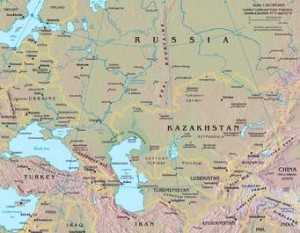
Hitler launched a massive invasion of the Soviet Union on June 22, with over 3 million men. He was highly successful, due in large part to a disorganized and unsuspecting Russian army. By July 8, they had captured 280,000 Soviet prisoners and almost 2,600 tanks were destroyed. The army was already a couple of hundred miles inside Soviet territory. Stalin was in a panic. He was so angry that he began executing generals who had failed to stop the invaders.
Halder, who was Hitler’s chief of staff, had been keeping a diary of the day-to-day decision making process. As time went on, Hitler became emboldened by his successes in Russia. Halder recorded that the “Fuhrer is firmly determined to level Moscow and Leningrad to the ground.” Halder also records the reality of Hitler’s underestimation of the Russian army’s numbers and the bitter fighting within Hitler’s own armies about strategy. Halder and some of the others wanted to make straight for the capital, Moscow. But Hitler wanted to meet up with Field Marshal Wilhelm Leeb’s army group, 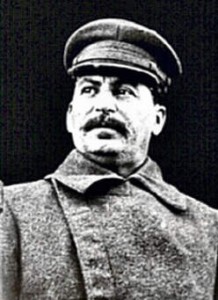 which was making its way toward Leningrad. And Hitler was, after all, in charge. But, the advantage Hitler had against the Soviets would not last very long. Winter was approaching and so was the advantage such conditions would give the Russians. The Russians were used to the severe Russian winters, and Hitler’s men were not. Like Napoleon before them, the Germans would soon find that they weren’t prepared for the Russian winter, and subsequent winters. And yet, Hitler thought he had learned from Napoleon. He ordered his troops to hold their ground. Which meant that during the Winter War, the German army was not able to pull back to more defensible positions. Consequently, the Russians were able to launch a series of counter-attacks during that first winter. These attacks cutoff some German forces, inflicted worse casualties than the Germans could inflict, but more importantly allowed the Russians to rebuild their army. The winter months proved to be just as detrimental for Hitler as they had for Napoleon. He was insane to even try such an attack.
which was making its way toward Leningrad. And Hitler was, after all, in charge. But, the advantage Hitler had against the Soviets would not last very long. Winter was approaching and so was the advantage such conditions would give the Russians. The Russians were used to the severe Russian winters, and Hitler’s men were not. Like Napoleon before them, the Germans would soon find that they weren’t prepared for the Russian winter, and subsequent winters. And yet, Hitler thought he had learned from Napoleon. He ordered his troops to hold their ground. Which meant that during the Winter War, the German army was not able to pull back to more defensible positions. Consequently, the Russians were able to launch a series of counter-attacks during that first winter. These attacks cutoff some German forces, inflicted worse casualties than the Germans could inflict, but more importantly allowed the Russians to rebuild their army. The winter months proved to be just as detrimental for Hitler as they had for Napoleon. He was insane to even try such an attack.
 On this day, June 16, 1961, the star of the Soviet Union’s Kirov Opera Ballet Company, Rudolf Nureyev defected while on a tour with the ballet company in France. He was 23 years old. It was a huge blow to the Soviet Union, both in the loss of Kirov Opera Ballet Company’s star, and that it severely damaged Soviet propaganda that touted the political and artistic freedom in Russia. But, Nureyev was not the first to defect, nor would he be the last. Communism had taken over Russia after the Russian Civil War, in which the Red Army successfully defended the Bolshevik government against various Russian and anti-Bolshevik armies. The Bolsheviks were Communist, and Russia would never be the same after their takeover.
On this day, June 16, 1961, the star of the Soviet Union’s Kirov Opera Ballet Company, Rudolf Nureyev defected while on a tour with the ballet company in France. He was 23 years old. It was a huge blow to the Soviet Union, both in the loss of Kirov Opera Ballet Company’s star, and that it severely damaged Soviet propaganda that touted the political and artistic freedom in Russia. But, Nureyev was not the first to defect, nor would he be the last. Communism had taken over Russia after the Russian Civil War, in which the Red Army successfully defended the Bolshevik government against various Russian and anti-Bolshevik armies. The Bolsheviks were Communist, and Russia would never be the same after their takeover.
My 4th great grandfather, Johann Georg Beyer was born in Germany in 1752, but the family immigrated to Russia in the mid 1700s, probably due to a poor economy in Gemany at the time. Later, when things heated up in Russia, the family decided to make the move to America. They worried about the impact Communism would have on their family, not to mention the fact that people were being pressed into service…even as young children. I believe that they got out pretty much in the nick of time to keep their family from being torn apart, however, one son was taken and to my knowledge, never heard from again.
There are many reasons why people would do everything they can to escape a Communist regime, and I’m sure that is also why Nureyev defected. I suppose that his life was different, since he had a talent that Russia wanted more than putting him in the army, but what if he could no longer dance? And what of his family should he have one? They might not be able to dance, and so might be forced to go into the army. And Russia has been saying that they had political and artistic freedom, but as we all know, that wasn’t true in reality. After defecting, Nureyev continued his career as a dancer. Over the next 30 years he danced with England’s Royal Ballet and the American Ballet Theatre. He was in great demand as both a dancer and choreographer, and even  made a few films, including an unsuccessful stint as the silent film star Rudolf Valentino. In 1983, he took over as ballet director of the Paris Opera. In 1989, he briefly returned to the Soviet Union to perform. He died in Paris in 1993.
made a few films, including an unsuccessful stint as the silent film star Rudolf Valentino. In 1983, he took over as ballet director of the Paris Opera. In 1989, he briefly returned to the Soviet Union to perform. He died in Paris in 1993.
While, Nureyev chose to return to Russia for a performance, possibly to show them that he was a free man, my grandfather’s family chose never to return to Russia, or to German as far as I know. It could have been that they distrusted the ability to get back out, but I think they just longed for a peaceful life, in a free nation, free from the tyranny of a corrupt government. That makes me wonder what they would think of things here in America now.
 Pretty much everyone has taken a ride on a roller coaster, but have you ever thought about where these originated or who thought them up? You might be surprised to learn that the roller coaster originated in Russia. I know that this is not at all what I expected. In Russia, they built a wood frame that the sledders used to fly down 70 foot high mountain slopes as early as the 16th century. Now, I don’t know it I would consider that to be a roller coaster, but I can tell you that I know it would be a scary ride. There weren’t any breaks on the whole thing. Just you and gravity. The ride was so popular that they built a summertime version…a wheeled cart that took riders down a wooden ramp. If that version, which I have seen in Jackson, Wyoming, and Keystone, South Dakota, though not at 70 foot drops, was as uncontrolled as the first one, I would not be on it.
Pretty much everyone has taken a ride on a roller coaster, but have you ever thought about where these originated or who thought them up? You might be surprised to learn that the roller coaster originated in Russia. I know that this is not at all what I expected. In Russia, they built a wood frame that the sledders used to fly down 70 foot high mountain slopes as early as the 16th century. Now, I don’t know it I would consider that to be a roller coaster, but I can tell you that I know it would be a scary ride. There weren’t any breaks on the whole thing. Just you and gravity. The ride was so popular that they built a summertime version…a wheeled cart that took riders down a wooden ramp. If that version, which I have seen in Jackson, Wyoming, and Keystone, South Dakota, though not at 70 foot drops, was as uncontrolled as the first one, I would not be on it.
Many of the early roller coasters, which were probably not what we would consider to be real roller coasters either, were designed as improvements to incline railways systems. Those patents began as early as July 2, 1872, but they were designed to take you from the top to the bottom of a hill or canyon, like the one at Royal Gorge in Colorado, or at Lookout Mountain in Chattanooga, Tennessee. I have had the pleasure of riding and both of those and I enjoyed them very much. I’m sure that most people would consider this type of ride to be pretty tame, as it is very controlled. It would have to be controlled in order to stop at the bottom.
 The Circular Railway, is probably the type of roller coaster that most of us rode as children. There are a few hills and slightly fast moments, but for the most part, it goes around in a circle, while going up and down hills. Pretty tame in the eyes of most thrill seekers, but for little kids, it works pretty well, or at least the old style did. I don’t know if some of the current circular railway roller coasters are scary or not.
The Circular Railway, is probably the type of roller coaster that most of us rode as children. There are a few hills and slightly fast moments, but for the most part, it goes around in a circle, while going up and down hills. Pretty tame in the eyes of most thrill seekers, but for little kids, it works pretty well, or at least the old style did. I don’t know if some of the current circular railway roller coasters are scary or not.
Probably one of the most famous roller coasters received it’s patent on this day, January 20, 1885, and was the first Switchback Railway roller coaster. If you thought about it, you might guess that is was at New York’s famous Coney Island. It was designed by LaMarcus Thompson, and debuted in 1884. This roller coaster was considered to be the first successful roller coaster. It was really a fairly primitive Gravity Switchback Railway, but the people loved it, and it immediately began bringing in as much as $600.00 a day…an amazing amount of money in 1884.
Roller coasters continued to be very popular until economic changes in he 1940s, 50s, and 60s caused them to lose their appeal. Nevertheless, the roller coaster would rise again. Now, we have Megacoasters, Hypercoasters, and Gigacoasters. Megacoasters such as Phantom’s Revenge in Pittsburgh’s Kennywood Park or The Beast at King’s Island were first. Hypercoasters standing 200 feet high, the first of which was Cedar Point’s Magnum XL-200 and the Desperado near Las Vegas, Steel Force at Dorney Park in Allentown, Pennsylvania and Mamba at Worlds of Fun  in Kansas City, Missouri, took things to the next level. Cedar Point then introduced Millennium Force, the world’s first Gigacoaster topping off at an astounding 310 feet above the ground.
in Kansas City, Missouri, took things to the next level. Cedar Point then introduced Millennium Force, the world’s first Gigacoaster topping off at an astounding 310 feet above the ground.
I suppose that in order to compete, rollercoasters will continue to become more wild, higher, and scarier as time goes on. I’m sure that many people look forward to each new one that is developed, but since I never liked merry-go-rounds or anything much scarier than a Ferris Wheel, I guess that I will have to leave those riding challenges to someone with more of a stomach for it than I have.
 When I think about our organized military system, both during the years of the draft and now with our military being voluntary service, it occurs to me just how fortunate we, as a people, are to live where we do. There are so any evil leaders in countries who are not only enemies to the rest of the world, but in reality, enemies to their own people. In those countries, the military forces are not only not voluntary and not draft either, but rather they are forced into service, and often taken forcibly from their homes in the middle of the night, never to be seen again. Those taken are often children…even very young children, who are taken from their families and trained to be soldiers, or rather, trained killers. Their lives are viewed as unimportant. They are simply there to do the bidding of their evil government, and die doing it if necessary. They are expendable, because to replace them, the government simply goes out in the middle of the night and takes another child from another family by force. This was the position my great great grandfather, Stephan Beier found himself, his wife, Anna Maria Meier Beier, and their family in, one night in Russia. It was the reason that his family left Russia, and it was the reason my grandfather, Cornealius Byer was in the United States when he met my great great grandmother, Edna Fishburn in the Dakota Territory in the mid 1880’s.
When I think about our organized military system, both during the years of the draft and now with our military being voluntary service, it occurs to me just how fortunate we, as a people, are to live where we do. There are so any evil leaders in countries who are not only enemies to the rest of the world, but in reality, enemies to their own people. In those countries, the military forces are not only not voluntary and not draft either, but rather they are forced into service, and often taken forcibly from their homes in the middle of the night, never to be seen again. Those taken are often children…even very young children, who are taken from their families and trained to be soldiers, or rather, trained killers. Their lives are viewed as unimportant. They are simply there to do the bidding of their evil government, and die doing it if necessary. They are expendable, because to replace them, the government simply goes out in the middle of the night and takes another child from another family by force. This was the position my great great grandfather, Stephan Beier found himself, his wife, Anna Maria Meier Beier, and their family in, one night in Russia. It was the reason that his family left Russia, and it was the reason my grandfather, Cornealius Byer was in the United States when he met my great great grandmother, Edna Fishburn in the Dakota Territory in the mid 1880’s.
The family had been asleep and suddenly, they were awakened to the most horrifying event any family could ever imagine. Their son was taken at gun point, by soldiers. It was the Russian draft of the day. They did not care what his age was, nor did they care about any other qualifications, or the lack thereof. They needed more soldiers, and he had been chosen. I’m sure they had watched him for some time, along with watching many other young men his age. I don’t know how old he was at the time, but I do know that he was probably not out of school yet. What I do know is that my great great grandparents never saw their son again. My guess is that he probably lost his life in a battle somewhere within a year. The Russian leaders did not care about the soldiers…they were expendable…a dime a dozen, so their safety was unimportant. They were most likely sent into the worst battle zones, to fight the most likely to be lost battles. In that way, they government could keep their best officers and soldiers, the ones who had chosen to be there…if that was possible, safer from the worst battles. Or maybe, they put all the soldiers in the same harm’s way.
My great great grandparents were very distraught at the events of that night and they knew that they were not going to go through it again. The decision was made to secretly make their way out of Russia and go to the United States where their children could grow up safely, and if they were drafted into military service, they would be treated with dignity, and they would be able to stay in touch with their families. No parent is completely comfortable with their child going into military service, because if there is a war, their child will be in the middle of it. Nevertheless, they are proud of their child’s service…when it is done in the right way. To come into their home in the middle of the night, and forcibly take their child, knowing that they will never hear from that child again, is simply and horribly wrong. My great great grandparents decided that they were never going to go through it again. That is what made their decision to immigrate to the United States a move that was much less scary that the thought of staying in Russia. They never knew what happened to their son, and I’m certain that was something that stayed with them all their lives, but they knew they had done the right thing when they saw the rest of their family grow up and lead good lives in the United States.
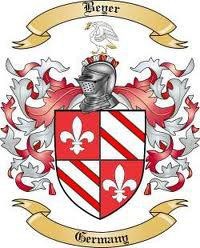 In the middle of the 18th century, Germany was a country that had been floundering due to European politics for more than a hundred years. At that time, France, England, and Spain largely had control of the continent because of their military might. The German states, on the other hand, were left to their own devices, and each leader was running his state for his own gain, without concern for the people or the nation as a whole. As a result of all the political greed, Germany was a nation that was going to quickly go under or eventually succumb to the greed around it and become an evil dictatorship, and no help was coming. It was in this Germany, at this time in history that my 6th Great Grandfather, Philipp Beyer (a name that would later be Americanized to Byer) and his wife, my 6th Great Grandmother Maria, were a young couple with a small son…my 5th Great Grandfather, Johann Beyer.
In the middle of the 18th century, Germany was a country that had been floundering due to European politics for more than a hundred years. At that time, France, England, and Spain largely had control of the continent because of their military might. The German states, on the other hand, were left to their own devices, and each leader was running his state for his own gain, without concern for the people or the nation as a whole. As a result of all the political greed, Germany was a nation that was going to quickly go under or eventually succumb to the greed around it and become an evil dictatorship, and no help was coming. It was in this Germany, at this time in history that my 6th Great Grandfather, Philipp Beyer (a name that would later be Americanized to Byer) and his wife, my 6th Great Grandmother Maria, were a young couple with a small son…my 5th Great Grandfather, Johann Beyer.
Germany was quickly becoming a place that was either going to fall apart or be controlled  by it’s own evil leaders. Either way, Germany had become a place where my 6th Great Grandparents could no longer afford to raise their family, so they made the decision to immigrate to Russia, which at that time in history was a better choice. I can’t even imagine how they must have felt, as they were leaving the country they loved, and moving to an unknown situation in an unknown country. Russia must have ended up being a good decision, because the family would live there for the next five generations, before my Great Grandfather, Cornelius George Byer, would make the decision in 1874 to immigrate to America, once again in search of a better life and to get away from a government that was quickly becoming extremely evil.
by it’s own evil leaders. Either way, Germany had become a place where my 6th Great Grandparents could no longer afford to raise their family, so they made the decision to immigrate to Russia, which at that time in history was a better choice. I can’t even imagine how they must have felt, as they were leaving the country they loved, and moving to an unknown situation in an unknown country. Russia must have ended up being a good decision, because the family would live there for the next five generations, before my Great Grandfather, Cornelius George Byer, would make the decision in 1874 to immigrate to America, once again in search of a better life and to get away from a government that was quickly becoming extremely evil.
It is a sad thing when a government becomes so evil that you feel like you must immigrate to another country in order to save your children from the tyranny of your own country. Like it or not, that is what many people had to do and still have to do in order to protect  their children. The move to America would be the best thing my great grandfather ever did. Once here, they were able to get a homestead that belonged to them, and was not subject to confiscation by an evil government, and more importantly, their children could not be taken away by the government to be raised as it saw fit, and become as evil as it was. It does make me very thankful that my grandfathers were wise enough to know when it was time to simply cut your losses, and get out…before their evil government made it impossible to leave.
their children. The move to America would be the best thing my great grandfather ever did. Once here, they were able to get a homestead that belonged to them, and was not subject to confiscation by an evil government, and more importantly, their children could not be taken away by the government to be raised as it saw fit, and become as evil as it was. It does make me very thankful that my grandfathers were wise enough to know when it was time to simply cut your losses, and get out…before their evil government made it impossible to leave.
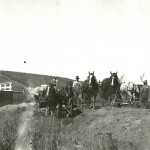
 I never knew my Great Grandpa Byer, because he passed away in 1930, long before I was born. Most of what I know of him comes from my genealogy research, pictures I have found, and the stories I have heard from my mom. The first time I remember hearing about him was when I gave birth to my oldest daughter, Corrie. My mother mention that I might want to name her Cornelia, so that it would be after her great great grandpa. I was not willing to go so far as to change the name I had chosen, but the name did attach itself to Corrie anyway, in the form of a nickname…that I loved, by the way.
I never knew my Great Grandpa Byer, because he passed away in 1930, long before I was born. Most of what I know of him comes from my genealogy research, pictures I have found, and the stories I have heard from my mom. The first time I remember hearing about him was when I gave birth to my oldest daughter, Corrie. My mother mention that I might want to name her Cornelia, so that it would be after her great great grandpa. I was not willing to go so far as to change the name I had chosen, but the name did attach itself to Corrie anyway, in the form of a nickname…that I loved, by the way.
My research told me that my great grandfather was born in Russia, which very much surprised me, as I thought that part of the family came from Germany. My mother filled in the blanks there, by telling me that in the 1780’s, my 6th great grandfather, who was concerned because of wars in Europe, and wanting to keep his family, and especially his son safe from the increasing German interest in jumping into the war. So, he moved his family to Russia, where my part of the family would live until, my great grandfather’s family immigrated to the United States. He eventually settled in South Dakota, where he married my great grandmother.
Picture documentation, at the point, places my great grandparents on a homestead in Nebraska. During his time in South Dakota and Nebraska, he befriended many of the Indians in the area. He was well respected by them and was invited to their Pow Wow’s. It is at this point in the family history that I came across another picture that made me wonder about its inclusion in the other family pictures. It still seems odd to me, but my mom assures me with her story, that it indeed fits in the family history. The picture is of a group of men in a pool hall. When I asked mom about the picture, she told me that she didn’t know the men in the picture, but the pool hall 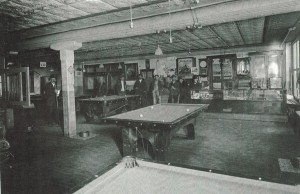 had belonged to her grandfather. I am still trying to figure out how he went from homesteading to a pool hall owner, but that is what he did. I’m sure that like most career changes, the decision was based on the income possibilities, because the main thing is to be able to support your family. The pool hall is not surprising to me because of what it was, but because of the fact that he had been a homesteader and farmer by trade for so long. Things change, as the needs change, and that is as simple as that. He saw a way to make a living, or even supplement the family income, and he did it. It is an interesting twist to my history.
had belonged to her grandfather. I am still trying to figure out how he went from homesteading to a pool hall owner, but that is what he did. I’m sure that like most career changes, the decision was based on the income possibilities, because the main thing is to be able to support your family. The pool hall is not surprising to me because of what it was, but because of the fact that he had been a homesteader and farmer by trade for so long. Things change, as the needs change, and that is as simple as that. He saw a way to make a living, or even supplement the family income, and he did it. It is an interesting twist to my history.
 Some old pictures are classics, like a picture of your grandfather with only part of the nine kids he and your grandmother had. It’s strange to see Grandpa so young, and if your parent is in the picture, like mine is, seeing your mom or dad that young is really odd, unless you have seen a lot of those really old pictures, which I had not. Their children, Evelyn, Virginia, Delores, Larry, Collene, and Wayne (the baby being held by Evelyn), born in that order, surround their Dad. It looks to me like they were on one of their many outings, most likely rock hunting, which was a favorite pass time for the whole family, although Aunt Evelyn doesn’t looks so happy…probably because, Uncle Wayne is crying, or so it looks to me.
Some old pictures are classics, like a picture of your grandfather with only part of the nine kids he and your grandmother had. It’s strange to see Grandpa so young, and if your parent is in the picture, like mine is, seeing your mom or dad that young is really odd, unless you have seen a lot of those really old pictures, which I had not. Their children, Evelyn, Virginia, Delores, Larry, Collene, and Wayne (the baby being held by Evelyn), born in that order, surround their Dad. It looks to me like they were on one of their many outings, most likely rock hunting, which was a favorite pass time for the whole family, although Aunt Evelyn doesn’t looks so happy…probably because, Uncle Wayne is crying, or so it looks to me.
It must have been taken in the Fall or Spring, because everyone is wearing coats. I was looking at my mom, who is the little girl Grandpa has his hand on, and I thought it was interesting that her hat looked like some worn by little immigrant girls on the Titanic. That interests me, because my grandfather’s dad immigrated from Russia, and Mom reminds me of that era, but I could be wrong on that thought. Of course, my grandfather’s mom was born in the United States, and Great Grandpa Byer was gone by the time my mom was born, so any similarity is probably accidental. I wish I could have known him.
I think it is interesting that the children are recognizable to me, even my mom, who is actually looking down a bit. There is just enough of her face for me to tell without a doubt that it is my mom. We all think that children change so much from the time they are little to the time they are grown, but the more I look at pictures, the more I realize that it isn’t so. Those little faces are smaller, but the features are the same, and while some might look quite a bit different, many really don’t.

